The following is an unedited transcript from our video series from Acoustic Fields. There will be some errors in grammar and sentence structure that occur during this translation process. For complete understanding and comprehension, please view the video which is included in this text. This blog was updated on 12/5/19 to reflect changes in experience and knowledge in regards to room size.
______
Hi everyone, Dennis Foley from Acoustic Fields. Today we’re going to talk about room size and volume as I get a lot of questions about this and it just never ceases to amaze me how many, how much misunderstanding there is about this. So I kind of put together some guidelines here and maybe this will help the situation a little bit.
A Box of Pressure
What is the room? A room is really this huge box of pressure. Well, not huge in some cases. But it’s this box of pressure from our loudspeakers or whatever the usage is, live room, control, voice. It’s a box that must contain and manage all the energy that you put in it if you’re going to achieve certain results. In a live room, you want to record certain things, you want them to sound a certain way. In the control room, the mixing and mastering room, you want a translation. So each room usage has a particular goal that you have to achieve. And the room size and volume are critical with this box of pressure, Obviously the smaller we make the box and if we keep the pressure constant, we’re going to have issues. Obviously, if we keep increasing the pressure and decreasing the volume of the box, we might as well just shoot ourselves because that’s a relationship that will not work at all.
Room Volume
So, how do we calculate room volume which is the length, width, height? Good simple formula. Take the length of your room, the width of your room and the height of your room and multiply the three. That will give you your cubic volume, cubic feet of volume. If you’re overseas, cubic metric volume, you just have to get this number in your head. So I went through our database and I came up with three divisions. We have 206 rooms built and measured in our database and I took all those rooms and I broke them down into three areas and I think these three areas will help. They’re all based on volume.
Red Zone Room
So if your room length, width, and height is less than 1,500 feet, please, cubic feet, please find another room. Why do I say this? It’s just too small for any energy to be managed correctly. Let’s take the low-frequency energy. If you’re going to manage low frequency in a room less than 1,500 cubic feet, the amount of treatment that you have to put in the room will make it so small that you wouldn’t be able to sit in it. So less than 1,500 cubic feet, absolutely not. Find another room.
Yellow Zone Room
Less than 3,000 cubic feet. Now, these can vary, you know the length, width, and height, they can all be different. But it’s the cubic feet we’re looking at because we’re talking about a box of pressure here. So less than 3000 cubic feet, problematic. Yes, it can be treated. Yes, it can be dealt with depending on usage and what you’re trying to achieve in that room. Less than 3,000 cubic feet work for some usages but not for others. So it’s – when I call problematic, it’s treatable, depending on the usage. And you have to figure out what you’re trying to do in the room versus how much treatment you’re going to need in the room.
Green Zone Room – Best
The next one is greater than 4,500 cubic feet. Anything over 4,500 cubic feet is treatable and usable almost in all forms and usages. So, that will give you some idea of three different levels to look at. If you’re considering a room for extra usage, look at the length, width, and height, get the volume, look at this chart and I’m going to include the chart at the end so you can visualize it. And just look at where your dimensions fall within that chart and realize that if it’s less than 1,500 cubic feet, find another room. Just do that, you’ll be much better off. Less than 3,000 cubic feet, we can treat it. It’s problematic, we have pressure issues, we have RT 60 reverberation time issues but it is treatable depending on usage. Now there are qualifications for the usage. It won’t work for maybe a live room with drums but it might work for a voice room or a control room. So all depends on usage. 4,500 cubic feet and up, plenty of space, plenty of space to manage a low-frequency pressure and the reflections or RT 60 times. In this graphic here that I’m referring to, you can see the breakdown and we have it colored in red, yellow and green. Red is a no go acoustically and yellow is problematic depending on usage. So keep that chart in mind and refer to it often if you’re looking at the usage and pressure and volume in rooms.
Low – Frequency
Our first concern with any small size room is low-frequency energy. Low-frequency energy waves are long and tall and most will not fit into our rooms. When they don’t fit, they produce room distortion. This distortion is termed modes. We have axial modes which are low-frequency energy that does fit between two parallel walls. It could be sidewalls to sidewalls, front to rear walls and even floor to ceiling. Our next set of distortions is tangential modes. This is energy that will not fit between four walls within the volume of a room. Finally, we have oblique modes which are six surface area distortions.
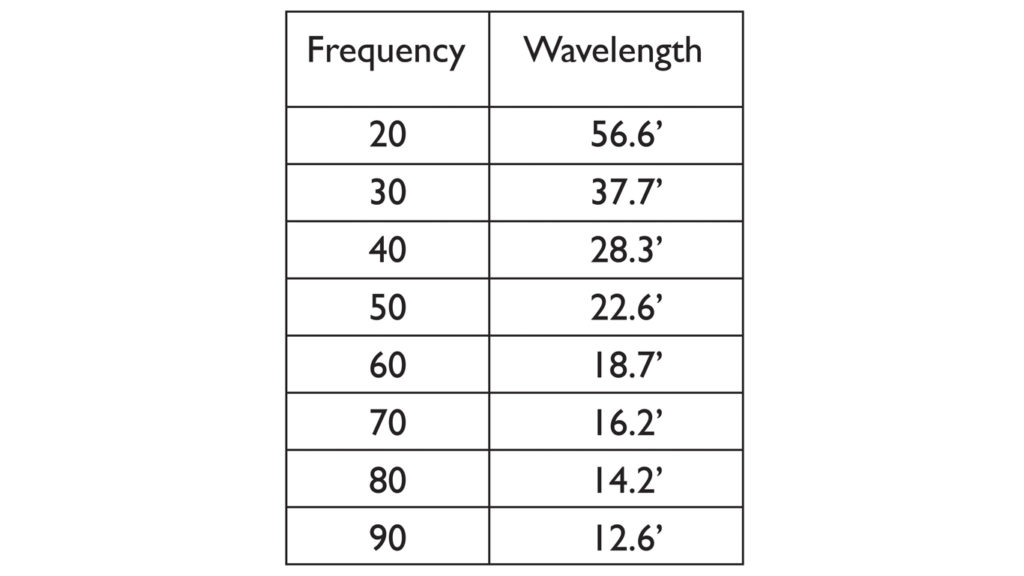
Frequency Vs. Wavelength 20Hz – 90Hz
Modal Distortion
When low-frequency energy does not fit it produces distortion. What does this distortion sound like? Distortion from waves of energy that will not fit into your room dimensions causes the air between those surfaces to vibrate. When the air vibrates between our surface areas within our small size room, we will hear too much of a certain frequency or we will not hear any of those frequencies. We have all heard “bass boom”. This is the distorted sound of low – frequency energy not fitting within our rooms. This is an exaggerated sound. Other sounds may not be heard at all. The air excitation will not allow us to hear certain waves of energy that will not fit into the room.
Frequency Response Curve: https://en.wikipedia.org/wiki/Frequency_response
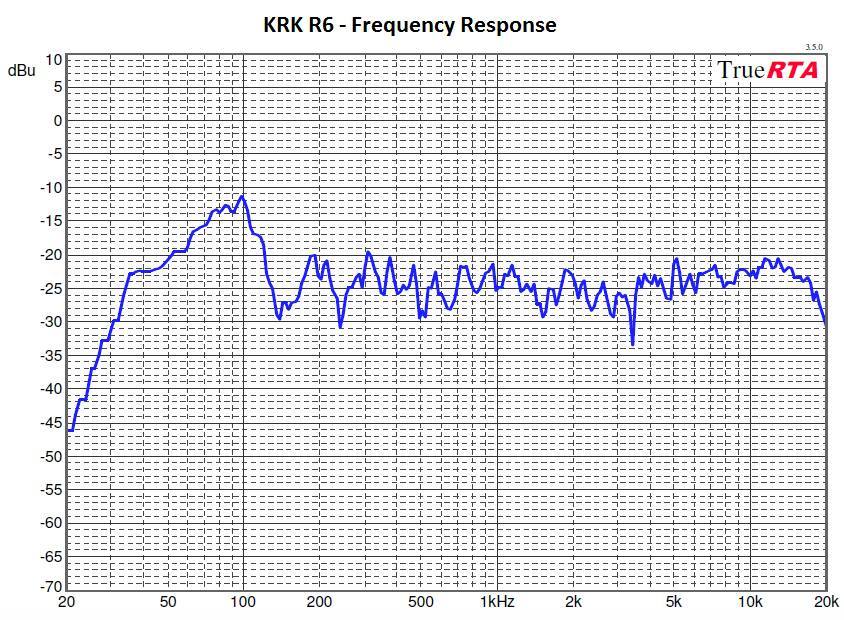
In this frequency response graph, we can see a large peak below 100 Hz. This indicates we will have excessive energy in that frequency response range. It will be exaggerated sound similar to our “bass boom” example. There is too much energy at that frequency range to fit into the dimensions of that room size and volume. Notice the other dips or troughs in the frequency response curve. Those dips mean that you will not hear sounds at those frequencies. The energy that has a certain wavelength will not fit and when it doesn’t fit, it produces exaggerated sounds or no sounds at all.
Low-Frequency Treatment
For the peaks within our graph and room, we must use low-frequency absorption. There are three types of low-frequency absorption. There are Helmholtz, Membrane, and Diaphragmatic. Diaphragmatic is the most powerful and will absorb more of the excess energy shown above 100 Hz. It will go lower in the frequency range and absorb more energy per square foot than any of the other two types. Space for treating low-frequency issues is limited within our small rooms so we must use a treatment type and amount that has the required rate and levels to deal with the excess energy shown above below 100 Hz.
Diaphragmatic Absorption: https://www.acousticfields.com/product-category/sound-absorption/acda-series/
Middle / High Frequencies
Middle and high-frequency energy shown in the response curve above can be treated using open cell foam technology. It is the most cost-effective and easy to install of all the treatment types. It comes in panels that can be hung on the wall surfaces. You must calculate how much surface area your room requires for your particular issues then install panels that have the required amount of surface area to deal with the frequency distortions.
Acoustic Panels: https://www.acousticfields.com/product/acoustic-panels/
For any additional information regarding this topic or others relating to room acoustics, please contact us directly at:
P: 520 – 392 – 9486
Thank you,
Dennis Foley


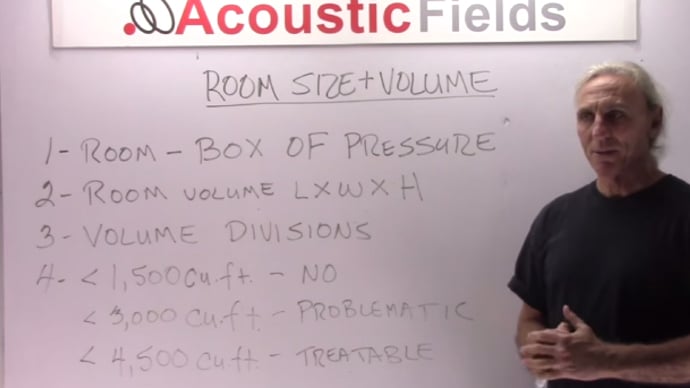
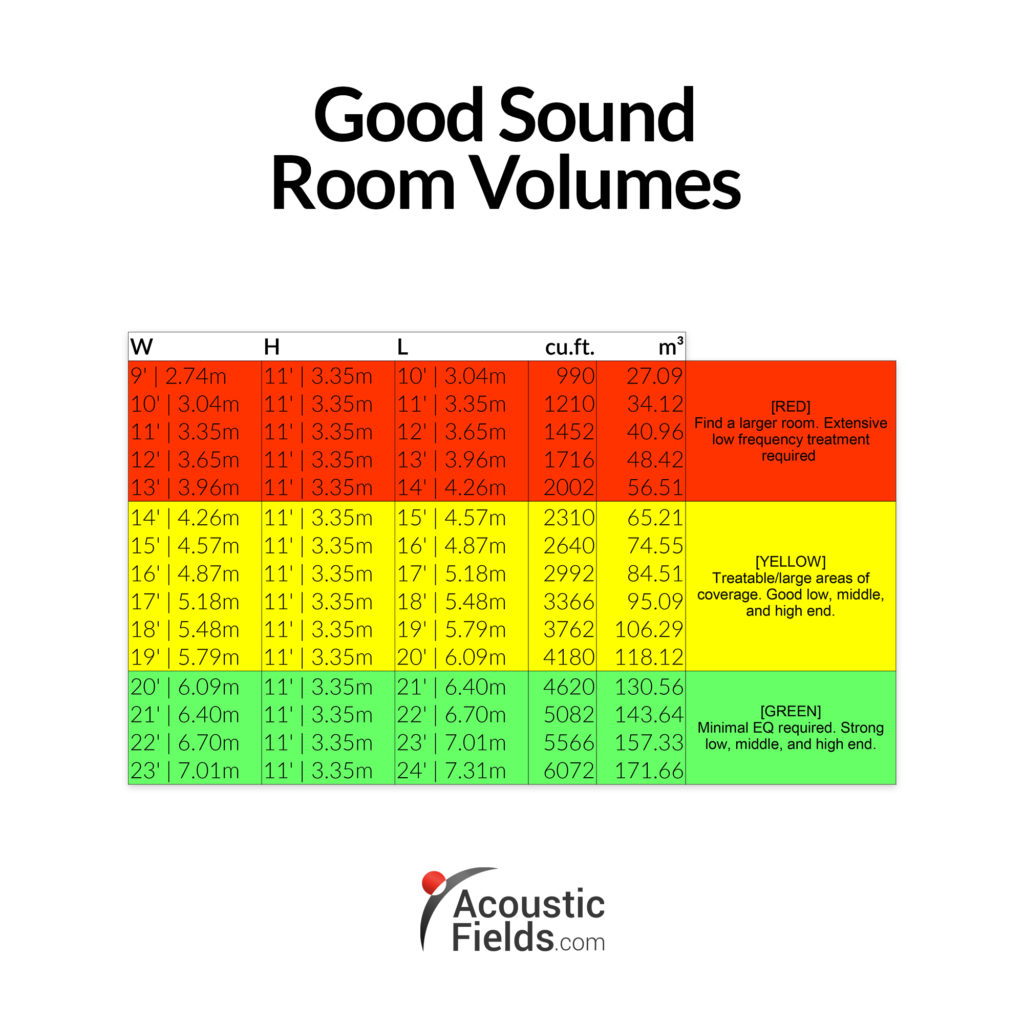


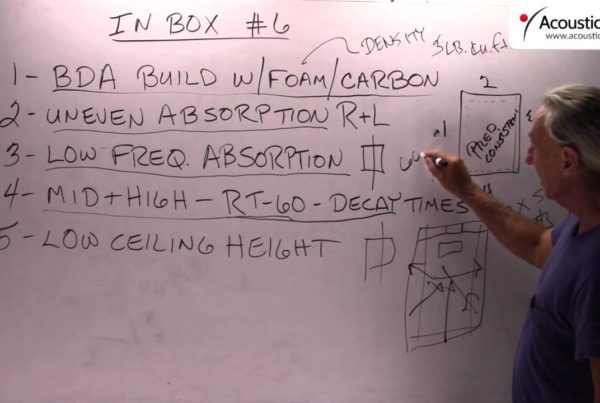
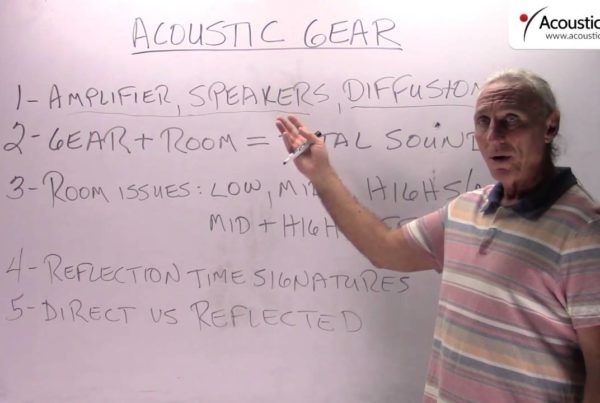
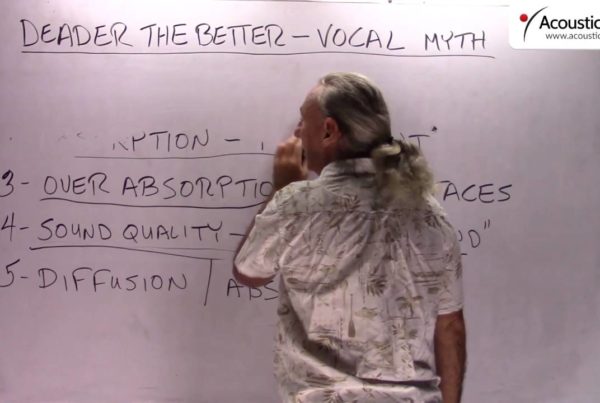

I have a potential drum studio
Being built: 4.5m deep, 7m long and 4m high
Need a quote for th entire space as efiencient as possible
Hi Mark, Just sent you an email. Go to the Book Now button and schedule a time to speak by phone.
Hi Boris, I will need more information to assist you. Fill out the information in this link: https://www.acousticfields.com/free-room-analysis/ Low frequency energy goes right through suspended ceilings.
I assume this applies to the usage case of a listener with a stereo system (for optimal sound).
Also any optimal room shapes? rectangular better then square?
C, Stay with rectangular rooms since the issues the room size and volume create are easier to predict, measure, and treat.
Hi, I have 40 second audio wav file and i want to calculate the room size from this data. can you please help me how can i solve this problem?
B, I do not need a wav file to calculate room size for usage. I have a database of 155 rooms built and measured. Fill out the information in this link: https://www.acousticfields.com/free-room-analysis/ You can attach your wav file to the form. Pictures are always a benefit.